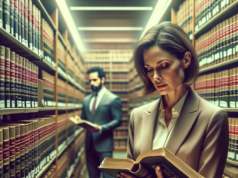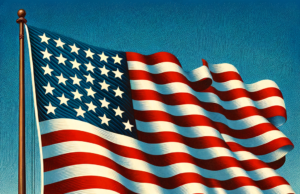The struggle for civil rights in America has been a long and arduous journey, marked by both triumphs and tragedies. Landmark cases in the legal system have not only shaped the course of history but have also unveiled the deep-seated injustices that have plagued society. This article delves into the historical context of these cases, the key figures and organizations involved, the legal framework that underpins civil rights, and the lasting impact of pivotal rulings such as Brown v. Board of Education. Additionally, it examines the role of media in raising awareness and mobilizing public opinion, while reflecting on the ongoing struggles for equality and justice in contemporary society.
Understanding the Historical Context of Landmark Civil Rights Cases in America
The historical context of landmark civil rights cases in America is rooted in a legacy of systemic racism and discrimination that dates back to the nation’s founding. The post-Civil War era saw the introduction of the Reconstruction Amendments, which aimed to secure rights for formerly enslaved individuals. However, the subsequent rise of Jim Crow laws in the late 19th century institutionalized racial segregation and disenfranchisement, perpetuating a cycle of inequality. The mid-20th century marked a turning point, as the Civil Rights Movement gained momentum, challenging the status quo through legal battles, protests, and grassroots organizing. Landmark cases emerged as pivotal moments in this struggle, revealing the profound injustices faced by marginalized communities and setting the stage for transformative change.
Key Figures and Organizations That Shaped the Civil Rights Movement
The Civil Rights Movement was propelled by a diverse array of key figures and organizations that played instrumental roles in advocating for justice and equality. Leaders such as Martin Luther King Jr., Rosa Parks, and Malcolm X emerged as powerful voices, each contributing unique perspectives and strategies to the movement. Organizations like the NAACP (National Association for the Advancement of Colored People), SNCC (Student Nonviolent Coordinating Committee), and SCLC (Southern Christian Leadership Conference) mobilized grassroots support and engaged in legal battles to challenge discriminatory practices. These individuals and groups not only fought against racial injustice but also sought to inspire collective action, fostering a sense of solidarity among those who yearned for change.
Analyzing the Legal Framework: Constitutional Amendments and Civil Rights
The legal framework surrounding civil rights in America is anchored in several key constitutional amendments that sought to address issues of equality and justice. The 13th Amendment abolished slavery, while the 14th Amendment guaranteed equal protection under the law and due process for all citizens. The 15th Amendment aimed to secure voting rights for African American men. However, despite these constitutional guarantees, systemic barriers persisted, necessitating further legal challenges. Landmark cases such as Plessy v. Ferguson (1896) and Brown v. Board of Education (1954) highlighted the ongoing struggle to interpret and enforce these amendments, revealing the complexities of achieving true equality in a society marked by deep-rooted prejudice.
Landmark Cases: Brown v. Board of Education and Its Lasting Impact
Brown v. Board of Education stands as one of the most significant Supreme Court cases in American history, fundamentally altering the landscape of public education and civil rights. Decided in 1954, the Court unanimously ruled that racial segregation in public schools was unconstitutional, effectively overturning the precedent set by Plessy v. Ferguson. This landmark decision not only dismantled the legal basis for segregation but also galvanized the Civil Rights Movement, inspiring activists to challenge other forms of discrimination. The ruling underscored the principle that “separate but equal” is inherently unequal, setting a powerful precedent for future cases and reinforcing the notion that equality is a fundamental right that must be upheld for all citizens.
The Role of Media in Highlighting Injustice and Mobilizing Public Opinion
The media has played a crucial role in highlighting injustices and mobilizing public opinion throughout the Civil Rights Movement. Photographs, news reports, and televised coverage of protests, demonstrations, and violent confrontations brought the realities of racial discrimination into the living rooms of Americans across the nation. The brutal images of the Birmingham protests in 1963, for instance, shocked the public and garnered widespread sympathy for the movement. Media coverage not only informed the public about the struggles faced by African Americans but also served as a catalyst for change, prompting legislative action and increasing support for civil rights initiatives. The power of media to shape narratives and influence public perception remains a vital tool in the ongoing fight for justice.
Lessons Learned: Continuing Struggles for Equality and Justice Today
Despite the progress made since the landmark civil rights cases of the mid-20th century, the struggle for equality and justice continues in contemporary society. Issues such as systemic racism, police brutality, and voter suppression persist, underscoring the need for ongoing advocacy and reform. The lessons learned from past struggles highlight the importance of vigilance, solidarity, and grassroots organizing in the face of adversity. As new generations of activists emerge, they draw inspiration from the legacy of those who fought for civil rights, adapting strategies to address modern challenges. The fight for justice is far from over, and the principles established in landmark cases serve as a guiding light for those committed to creating a more equitable society.
The unveiling of injustice through landmark civil rights cases has illuminated the ongoing struggle for equality in America. By understanding the historical context, recognizing key figures and organizations, analyzing the legal framework, and acknowledging the role of media, we can appreciate the complexity of this journey. As we reflect on the lessons learned, it is imperative to remain committed to the fight for justice, ensuring that the sacrifices of those who came before us continue to inspire and guide future generations in their pursuit of a more just and equitable society.
































